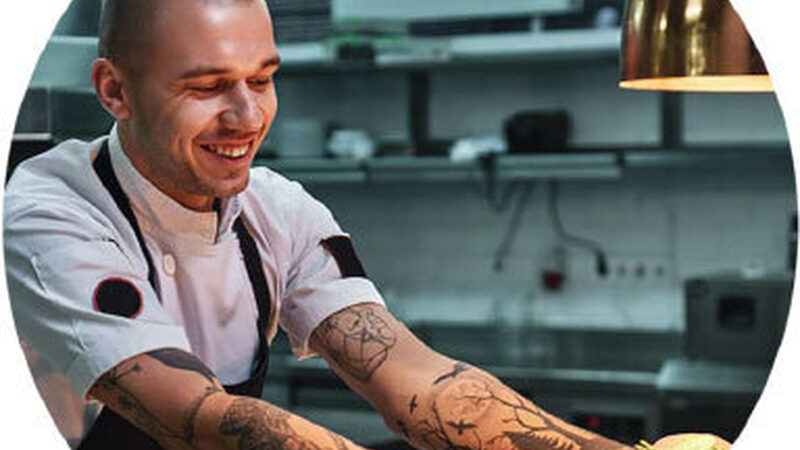News
May 27, 2021
Labor Shortage Solutions Part II: Training - Pre-Training

By Andy Cook, Restaurant Consultant with Derek Bugge, Chef Consultant,
Harbor Foodservice Restaurant Solutions Group
The following offers considerations that will prepare you, your team, and new hires for volume on-boarding now and moving forward. Early preparation efforts will have a magnified positive effect not just for the training period, but for the extent of their employment, aa well as increasing long-term retention rates.
Mission Statement
Your mission statement should be concise, easy to grasp & communicate, and accurate to the point of a consistent commitment. If you draft a mission statement that sounds good but conflicts with the reality of your restaurant, it will do more harm than good. Let’s start with an example to illustrate the benefits of a mission statement:
We believe in doing right by people and exceeding expectations. Every connection with our team and our guests is an opportunity to create an experience that shows we care.
When people think of us, we want them to think “They didn’t have to do that!”
In this example, I’ve bolded the key takeaways that provide context and direction for inevitable troubleshooting when a new hire encounters a decision point, this provides a filter of “doing right by people” and “exceeding expectations” these extend to both customers and coworkers. If a better choice could have been made, this minimizes errors and offers an opportunity to coach them towards a better way next time.
Define Positions
Identify and list the equipment, hard skills, and soft skills associated with the positions of your establishment. These insights will populate a tighter training plan that will ensure the key proficiencies are addressed and opportunities to identify areas pf focus for your new hires. Here are some examples:
- Equipment: POS system, slicer, wine key, ovens
- Hard Skills: Up & suggestive selling, knife use, tray or arm carrying
- Soft Skills: Sense of urgency, collaborative spirit, patience
Survival Guide (Cheat Sheet)
A Survival Guide is a reference you can produce to help them be more independent during training and help keep their trainers focused on what’s important. Work with your team to identify what can you provide to new hires that will (hopefully) prevent them from having to ask and distract contributing staff, such as ways to be proactive in a lull, map of needful things, lingo translator, etc. Keep it tight, they’ll learn the rules over time and through exposure.
FOH Survival Guide Examples
The most proactive things you can do in a lull are:
- Do a pre-bussing sweep
- Restock condiments
- Shadow for a new skill
- Difference between a void and a comp is this, here’s our procedure and why
- When we seem to be out of spoons check ______
BOH Survival Guide Examples
- The most proactive things you can do in a lull are:
- Clean & sanitize your station
- Restock your station | help restock neighboring stations
- Shadow for a new skill
- Our safe words are _____, they apply to _______.
- Recipes are kept _______
- Have a clear inventory map and labeled areas
Technology
Technology when applied and used appropriately can be a tremendous tool. In many circumstances you have useful technology already at your fingertips.
Picture, videos, and an individual’s phone can be a potent combo. A useful inclusion to your survival guide (and for general usage) is to produce simple “show them what right looks like” media. If that can be shown in a picture, cool. If it’s procedural, record a quick cell phone video. Store the pics/video in a shared cloud drive, optionally sorted by positional folders, and share it with the appropriate staff.
- Busser: Video of properly clearing a table, picture of a set table
- Prep Cook: Video of a prepping an item including pics of the equipment needed
- Bartender: Picture of a drink special, video of the steps
- Line Cook: Pictures of a ready station, platings, video of closing sidework
In many cases, you likely have access to useful teaching tools baked into technology already in place and all it’ll take is a few minutes of reviewing the tech providers website. For instance, the POS you’ve had for years could have features that have rolled out quietly since you’re unaware of.
Tasting Menu
It’s a best practice to offer product sampling opportunities to all new hires AND ongoing with your team. A cost-effective opportunity is creating a tasting menu that covers as much as possible with little waste.
Check your POS data to identify your highest volume menu items and include current seasonal or point-of-pride options. The FOH staff should be able to identify it, describe it, and discuss it. The BOH should be able to prepare it, modify it, and find its components.
Welcome Letter
This is an area where pre-training blends into Training/Onboarding Take all the preparation and structure you’ve determined to be part of your Training/Onboarding and include them into a welcome letter for all your new hires. Based on the content already outlined and some that is probably already in place, your letter could include:
- A welcome statement that conveys excitement for having them join your team
- Needed paperwork: i9, W2, Social security, ID, health card, etc.
- Mission Statement & Policies
- Description of skills & equipment
- Survival Guide
- Explanation of resources: Scheduling app, pics/videos, map of the building, etc.
- Contact information for help/support
The information, insights, resources, and ideas shared are intended to be motivational. The real value comes when new ideas and aha moments are aimed at a goal and powered by a plan. I LOVE my career as a Restaurant Consultant with Harbor Foodservice, if I can help you or your team personalize any of these ideas, I’d welcome the experience with you.
Contact Andy Cook: andy.cook@harborfoodservice.com


